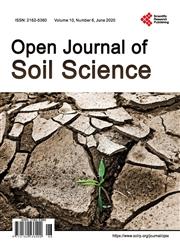The Disappearing Colorado River: Historic and Modern Attempts to Manage the Lifeline of the United States Southwest
引用次数: 2
Abstract
Historic Native American and modern civilizations have been forcing the unstable use of the Colorado River and adjacent land resources for centuries. Much can be learned from past Native American cultures that created irrigation systems to offset low rainfall. These lessons learned can be applied to our modern civilization. We can learn a lot from their previous behavior and experiences and could apply the lessons learned to our current disappearing Colorado River situation. Little of the Colorado River water flow reaches the international border with Mexico near Yuma, Arizona. Intensive consump-tion, mostly in the United States, has dried up the lower 160 km of the river. Since the 1960s, the Colorado River has rarely flowed into the Gulf of California and when it does it becomes is a major international news event. The Colorado River Delta is drought prone and its headwater tributaries are a vital source of water for 40 million people. The Colorado River has whitewater rapids, canyons, and many United States National Parks. The tributary and river flow is managed by an extensive system of dams, aqueducts, and reservoirs. Most years the entire Colorado River flow is used for United States agricultural irrigation and domestic water supply purposes. The agricultural and urban needs in the United States are continuing to grow and it appears the days of Colorado River flowing into Mexico and the Gulf of California are numbered and declining every decade. The Colorado River is disappearing and restoration efforts appear to be too little too late. If the Colorado River valley is ever going to recover management lessons and failures learned from the Native Americans, including the Hohokam,消失的科罗拉多河:管理美国西南部生命线的历史和现代尝试
几个世纪以来,历史悠久的美洲原住民和现代文明一直在迫使科罗拉多河和邻近土地资源的不稳定使用。我们可以从过去的美洲原住民文化中学到很多东西,他们创造了灌溉系统来抵消低降雨量。这些经验教训可以应用于我们的现代文明。我们可以从它们以前的行为和经历中学到很多东西,并可以将这些经验教训应用到我们目前正在消失的科罗拉多河的情况中。科罗拉多河的水流很少到达亚利桑那州尤马附近与墨西哥的国际边界。密集的消费,主要是在美国,已经干涸了下游160公里的河流。自20世纪60年代以来,科罗拉多河很少流入加利福尼亚湾,而一旦流入,就会成为重大的国际新闻事件。科罗拉多河三角洲容易发生干旱,其源头支流是4000万人的重要水源。科罗拉多河有激流、峡谷和许多美国国家公园。支流和河流由水坝、渡槽和水库组成的广泛系统管理。大多数年份,整个科罗拉多河的流量被用于美国农业灌溉和家庭供水目的。美国的农业和城市需求正在持续增长,科罗拉多河流入墨西哥和加利福尼亚湾的日子似乎已经屈指可数,而且每十年都在减少。科罗拉多河正在消失,恢复工作似乎太少也太迟了。如果科罗拉多河谷想要从包括霍霍坎人在内的美洲原住民那里吸取管理经验和失败教训,
本文章由计算机程序翻译,如有差异,请以英文原文为准。
求助全文
约1分钟内获得全文
求助全文

 求助内容:
求助内容: 应助结果提醒方式:
应助结果提醒方式:


